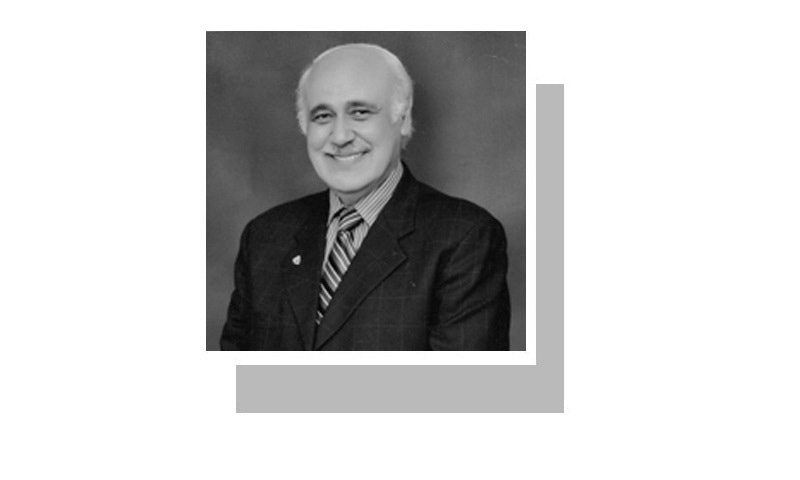
QUEEN Elizabeth II maintains a diary daily, for posterity. In Pakistan, the establishment accumulates data daily, with which to prosecute its own prime ministers.
On Dec 2, 1988, for example, after Mohtarma Benazir Bhutto was sworn in as prime minister by president Ghulam Ishaq Khan, he returned to his office after the ceremony and instructed the then attorney general to start compiling references against her. In time they became public when formal proceedings were instituted (but never consummated) against her and her husband Asif Ali Zardari.
Today, documents purportedly from the still highly restricted Volume 10 of the Joint Inspection Team Report (only the Supreme Court and NAB are supposed to have copies) have found their way into the public domain. Anyone, even a layman, looking at the artful precision with which the fund flow charts of the Sharif dynasty have been delineated since 2001, would notice that they are the product not of the eight-week moth-life of the JIT but of years of dogged research by determined sleuths.
It is probable that Volume 10 of the JIT report will suffer the same fate as the Hamoodur Rahman Commission report of 1972. Tantalising parts of that report were revealed years after they were relevant; its scandalous parts remained concealed by every government with all the dexterity of adept ecdysiasts.
Hassan Nawaz might want to fire his accountant.
On the assumption that the JIT documents and charts presently circulating amongst the inquisitive public are bona fide (the JIT is hardly likely to authenticate their veracity), the contents of even a few of them make startling reading.
One of them traces the ‘Flow of Major Transactions in the Accounts of Mian Muhammad Nawaz Sharif & Mrs Mariam Safdar (2008-17)’. It links the receipt of Rs1,416.450 million to Nawaz Sharif from his son Hussain between June 2010 and August 2013, and later their Saudi Arabian company Hills Metal Establishment from October 2013 to May 2017. It also documents the receipts of Rs1,004.42m by his daughter Maryam Nawaz and its reappearance as declared land valued in 2010-11 at Rs32.059m. and in 2015-16 at Rs804.42m.
Another flow chart — identified as Annexure VII and captioned ‘Panama Paper Case: Reported Money Trail’ — contains too much detail to be described here. Looking at it is to admire the dexterity of its weaver. It is an exquisite carpet of data, each skein of information knotted seamlessly into a flawless pattern of flawed intentions.
The first prize (in the absence of any hidden contenders) must go to a chart titled ‘HNS companies — Funds Flow (2001 to 2008)’. The layout splays Hassan Nawaz’s London property transactions. Threads radiate to and from companies like Flagship Investments Ltd (2001), Que Holdings Ltd (2003), Quint Eaton Place 2 Ltd (2003), and Flagship Securities Ltd (2005). The picture that emerges is an intricate spider’s web of venality. One is reminded of Sir Walter Scott’s words: ‘Oh, what a tangled web we weave/When first we practise to deceive!’
Whether Hassan Nawaz appears before NAB to answer the allegations contained in the JIT report or not, he might like to heed this advice: fire your accountant. Such detailed information could only have been leaked. Hire the man who prepared the flow charts. His tracery made damaging sense of your alleged property transactions.
Our judiciary’s birthday present to the nation on its 70th anniversary has been to make confusion in politics worse confounded. Two months ago, a PML-N government led by Nawaz Sharif was in place, poised to win the 2018 general elections. Today, the same PML-N government has become Pakistan’s version of India’s Congress party. Prime Minister Shahid Khaqan Abbasi has become the equivalent of the puppet Manmohan Singh, and Nawaz Sharif a counterpart to Mrs Sonia Gandhi — in the words of William Pitt, that “something behind the throne greater than the King himself”.
One wonders how much discretion Shahid Khaqan Abbasi had when appointing his new cabinet. He could have done without Ishaq Dar as finance minister (he has already booted him from more than 30 governmental committees). Did he need the voluble Saad Rafique as his railways minister, when the manner of Mr Rafique’s victory in the last elections was questionable? And does he need a bloated cabinet of more than 50 full ministers and ministers of state and advisers to run the country for the next eight months or so?
The answer is that Prime Minister Abbasi is less concerned with ministerial governance than with electoral success. Normally, party loyalists are rewarded for their labours after elections. The prime minister has chosen to incentivise them before the next elections.
Rumours blink like fire-flies of a military takeover or an interim government of pliable technocrats, or a vivisection of the PML-N. Could it — itself a haunch of the Quaid’s Muslim League — be this year’s Eid-ul-Azha sacrifice?
The writer is an author.
Published in Dawn, August 24th, 2017











































